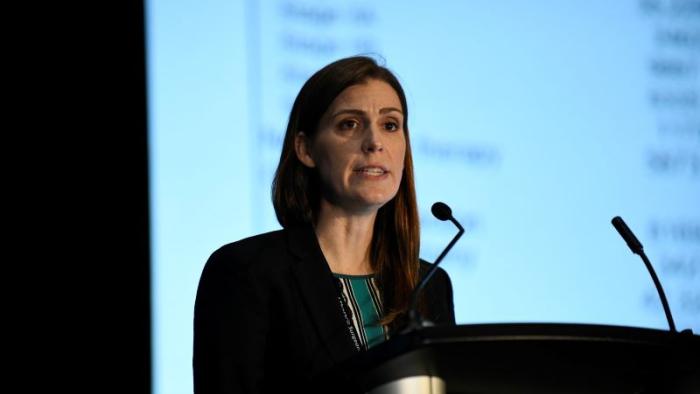At a standing-room-only presentation at STS 2024, STS Past President Dr. Mike Mack and Dr. Cherie Erkman presented data from the STS’ first annual survey on surgeon compensation.
The first-of-its-kind survey, conducted in October 2023, was designed to help US-based cardiothoracic surgeons understand their value and make informed career decisions using reliable benchmarks specific to the specialty.
“There is a lot of data out there on what cardiothoracic surgeons are paid, but that data is all over the place,” said Dr. Mack, chair of the Compensation Taskforce appointed by STS President Tom MacGillivray. “Understanding compensation begins with accurate data. That was the genesis behind conducting the survey.”
Nearly 850 STS members participated in the survey, a 27% response. Participants provided information on their total annual compensation, including salary and compensation related to RVUs/productivity – which represents about 80% of compensation – and other services provided. The survey also captured subspecialty, career stage, gender, ethnicity, geographic location, service area, and employment model.
The survey affirmed expected pay differences between specialty, practice, career stage, and geography, as well as gender pay disparities between men and women surgeons, according to Dr. Erkman. Her analysis revealed that women cardiothoracic surgeons earn between 64 to 84 cents for every dollar their male counterparts earn, depending on their specialty.
While cardiothoracic surgeons provide tremendous value to the patients and institutions they serve, it has been a challenge to understand that value and translate it into fair compensation, explained Dr. MacGillivray. “This survey gives us a starting point,” he said. “We need to understand where there are disparities and inequities, and then fix them.”
“I’m proud of STS and Dr. MacGillivray for taking action to help us better understand compensation in our specialty and shine a light on pay disparities,” said Taskforce member Dr. Shanda Blackmon. “This gives women surgeons the knowledge and power we need to advocate for ourselves.”
The limited sample size produced some regional variability, Dr. Mack said, and the data do not reflect that cardiothoracic surgeon residents and fellows are compensated far less than attending surgeons during their many years of training.
“Cardiothoracic surgeons train for an average of 15 to 16 years and start their first attending job at age 34 or 35,” Dr. Mack explained. “Many accumulate significant debt during medical school and training.” A recent Thoracic Surgery Residents Association survey found that 53% of residents have more than $200,000 in debt.
Workload is not reflected in the report, Dr. Mack said, but US-based cardiothoracic surgeons work 65 to 80 hours per week, sometimes more, performing both scheduled and emergency operations.
STS is working with consulting firm Gallagher, an expert in physician compensation and valuation services, to collect and analyze data, and produce an annual compensation report. Data collected by Gallagher is confidential and will not be shared with STS, explained Dr. MacGillivray.
The 2023 Cardiothoracic Surgeon Compensation Report will be available in early February. STS members who participated in the survey will receive it at no cost. Members, nonmembers, and institutions interested in purchasing the report can add their name to the interest list.
“The Society plans to conduct the compensation survey annually. We encourage US cardiothoracic surgeons to participate every year so the report provides the most accurate data, and so they can receive the report for free,” said Dr. Mack.
